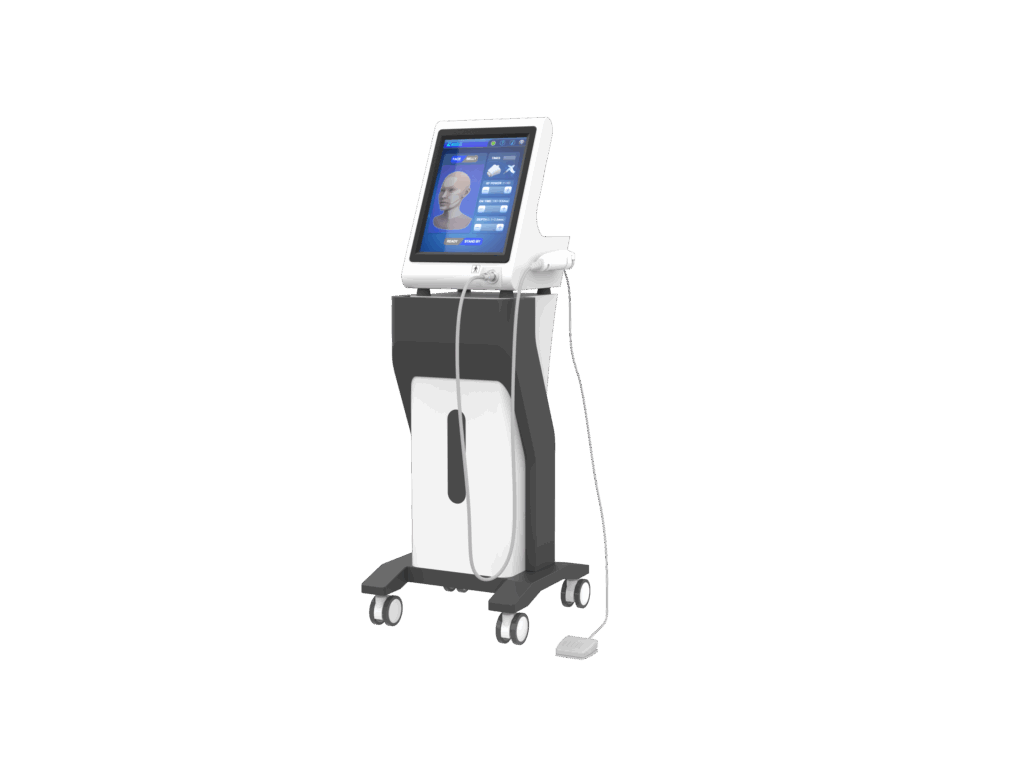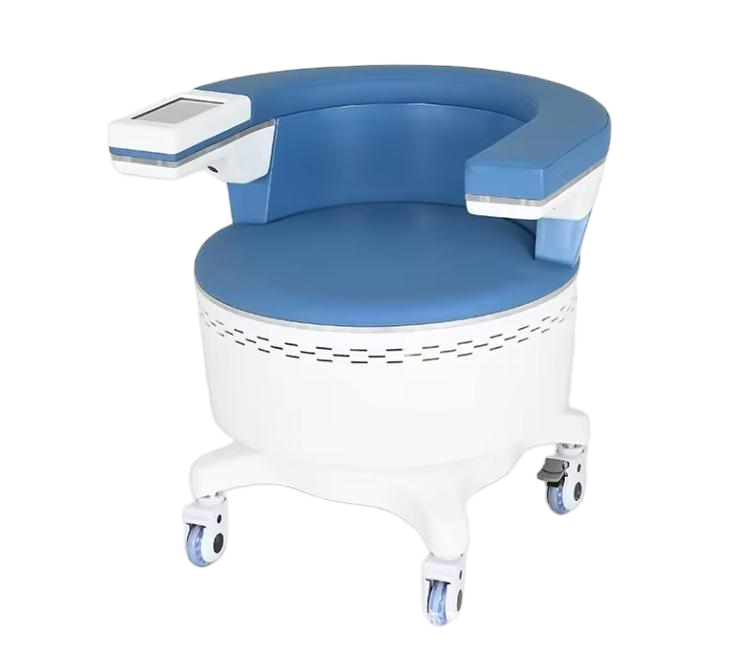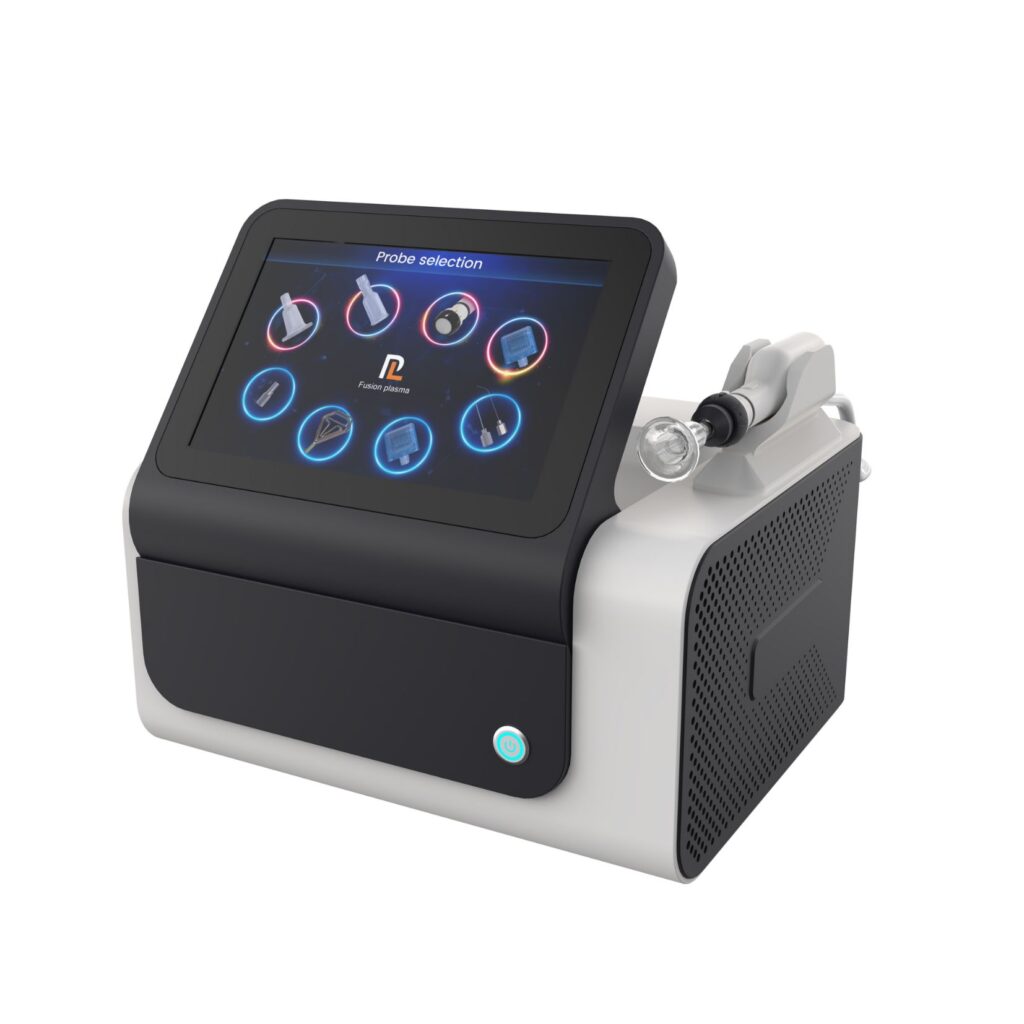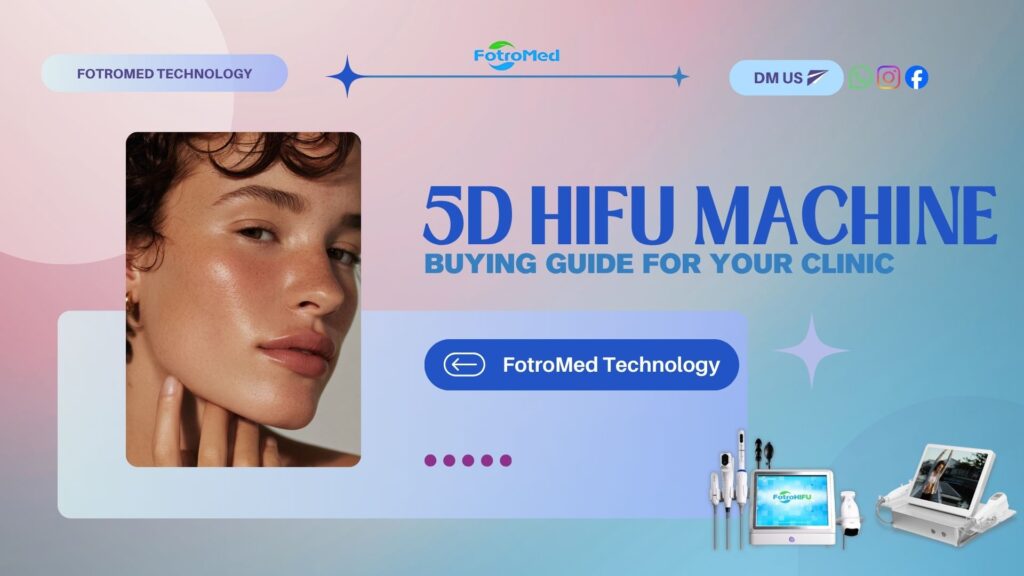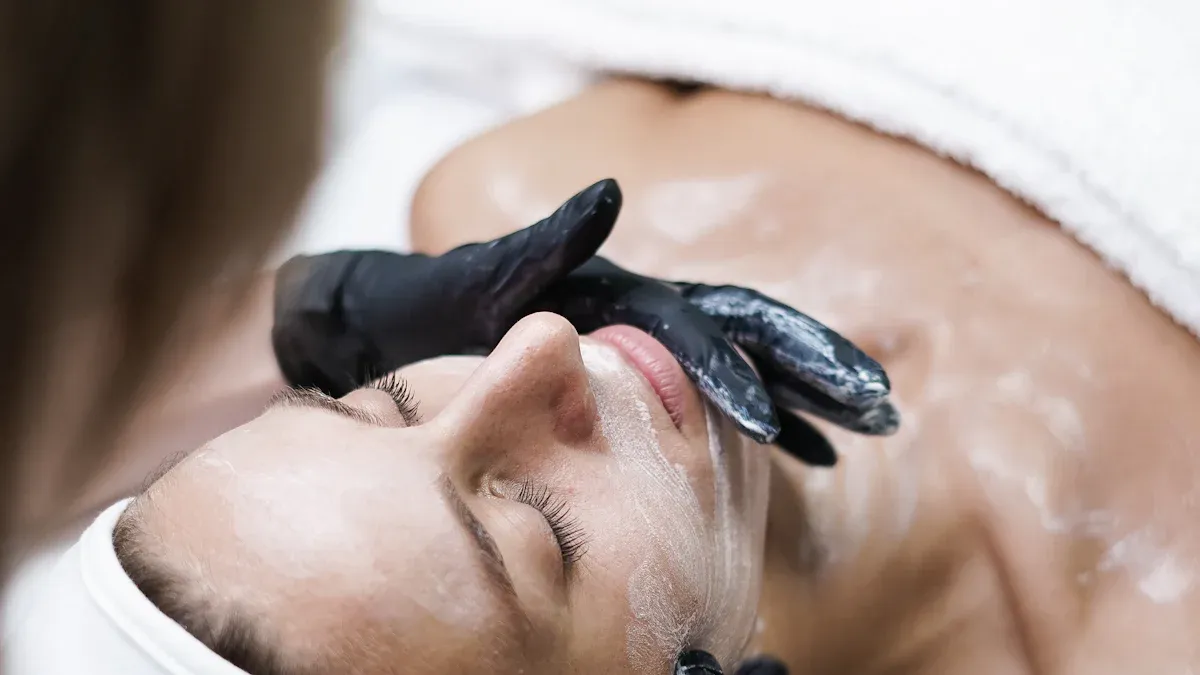
You might ask which treatment works better for tighter skin: hifu vs rf microneedling. Hifu is best for deep tightening and lasts longer, while RF microneedling helps with skin texture and small lines. Both treatments have unique benefits for different skin needs. You can choose by considering your skin type, age, and what you want. The table below shows how popular and helpful these treatments are:
| Aspect | Details |
|---|---|
| Market Size (2024) | $0.43 billion |
| Projected market (2025) | $807.24 million |
| Patient satisfaction | 87.5% |
| Growth rate | 8.40% CAGR |
| Improvements after sessions | 20% to 60% |
You can learn more about hifu vs rf microneedling as you explore your options.
Key Takeaways
- HIFU works well for deep skin tightening and lifting. It gives results that last 12 to 18 months. You need fewer sessions with HIFU.
- RF Microneedling helps make skin smoother and reduces fine lines. You need more sessions for best results. The results last about 3 to 6 months.
- Think about your skin type and age before you choose. HIFU is good for older adults who want lifting. RF Microneedling helps younger people with surface skin problems.
- Both treatments do not need surgery and have little downtime. After HIFU, you can do normal things in 48 hours. RF Microneedling heals in about 24 hours.
- Talk to a trained provider to find the best plan for your skin. You can also use both treatments together for better results.
What Is HIFU?

How HIFU Works
You might wonder how hifu makes skin tighter. Hifu means high-intensity focused ultrasound. This treatment uses ultrasound energy to go deep under your skin. The energy makes tiny hot spots. These spots start your body’s healing process. Your body then makes more collagen and elastin. These proteins help your skin stay firm and smooth.
- Hifu works on layers under your skin, so the top layer stays safe.
- The ultrasound waves hit certain spots and make heat.
- This heat helps your body grow new collagen and fix tissue.
- Hifu can also reach fat cells and shape your face.
New hifu machines use real-time imaging and better energy. Devices like Ultraformer MPT make treatments quicker and more comfy.
HIFU for Skin Tightening
Hifu is famous for making skin tighter deep down. Studies show hifu can make skin firmer by 18% to 30%. You might see tighter skin and a gentle lift, mostly on your face and neck. Most people see changes after one treatment. Your skin keeps getting better for months as collagen grows.
| Evidence Type | Findings | Safety Profile |
|---|---|---|
| Systematic Review | Strong proof that HIFU tightens skin well. | Few side effects happen. |
| Clinical Trials | Skin gets firmer by 18% to 30% in many places. | Redness or swelling in less than 5% of people. |
| Randomized Trials | Collagen in skin goes up by 25% after 3 months. | Tests show new collagen fibers in the skin. |
You will have little downtime and low risk of problems.
Who Should Choose HIFU?
Hifu works for many ages and skin types. If you want tighter skin without surgery, hifu may be good for you. Doctors suggest hifu for people with mild or moderate loose skin. It is safe for light to medium skin tones. People with dark skin can use hifu too. They should go to a good clinic and ask about lower energy.
Tip: Always put on sunscreen after hifu to protect your skin and keep results longer.
If you want to lift and firm your skin without surgery, high-intensity focused ultrasound is a safe and proven choice.
What Is RF Microneedling?
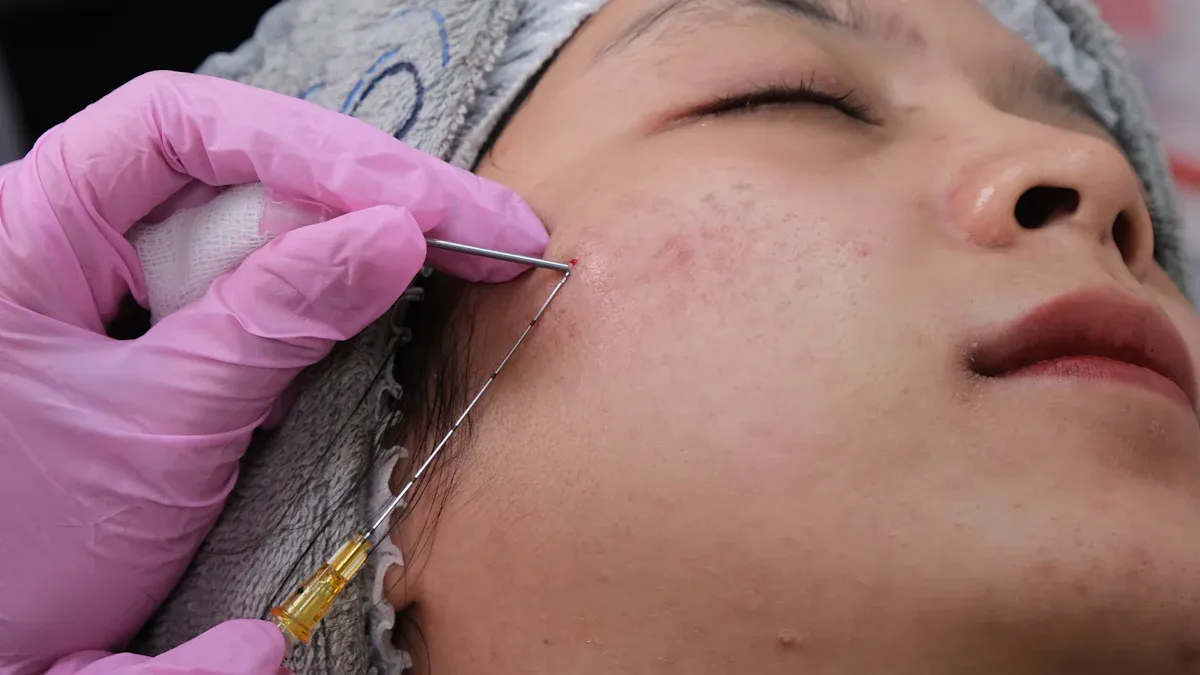
How RF Microneedling Works
You might wonder how rf microneedling helps your skin. This treatment uses tiny needles and rf energy together. The needles make small holes in your skin. At the same time, rf energy heats deeper skin layers. This helps your body make more collagen and elastin. Your skin gets firmer and smoother.
Here is a table that shows how rf microneedling is different from regular microneedling:
| Feature | RF Microneedling | Traditional Microneedling |
|---|---|---|
| Technology | Uses radiofrequency energy | Uses only physical punctures |
| Needle Depth | 0.5 mm to 3.5 mm | Up to 1.5 mm |
| Treatment Depth | Mid-to-deep dermis | Superficial layers |
| Collagen Stimulation | Enhanced due to rf energy | Minor stimulation only |
| Customization | Real-time energy feedback | Limited customization |
| Overall Results | More effective with fewer sessions | Requires more sessions for results |
New rf microneedling machines use smart technology. Some devices use AI to change settings for your skin. This makes the treatment safer and better.
RF Microneedling for Tightening and Texture
Rf microneedling helps tighten skin and improve texture. You may see fewer fine lines and wrinkles. It also helps with acne scars and uneven skin color. Studies show rf microneedling can help acne scars by 50-75% after three treatments. Your skin may feel plumper and more moist.
Tip: Rf microneedling works faster than regular microneedling. You need fewer treatments to see results.
Using microneedling and rf energy together makes your skin look younger and smoother. You get a gentle lift and better skin texture.
Who Should Choose RF Microneedling?
Rf microneedling works for many people. You can try it if you have normal, oily, dry, or mixed skin. People from their 20s to 60s or older can benefit. If you want to fix fine lines, wrinkles, acne scars, or uneven skin color, this treatment is a good choice.
| Characteristic | Details |
|---|---|
| Skin Types | Normal, oily, dry, combination |
| Age Range | 20s to 60s and beyond |
| Skin Concerns | Fine lines, wrinkles, acne scars, uneven tone, signs of aging |
| Medical Considerations | Share your medical history with your provider |
Radiofrequency microneedling is a safe way to refresh your skin. Always talk to your provider about your health before you start rf microneedling.
HIFU vs RF Microneedling: Key Differences
Mechanism and Depth
Hifu and rf microneedling help your skin in different ways. Hifu uses ultrasound energy. This energy goes deep under your skin. It makes small hot spots. Your body starts making more collagen. Collagen helps tighten and lift your skin.
Rf microneedling uses tiny needles. The needles make small holes in your skin. At the same time, radiofrequency energy heats your skin. This mix helps your skin heal. Your skin builds new collagen. You get smoother skin and better texture.
Here is a table that shows how hifu and microneedling are different:
| Aspect | HIFU | RF Microneedling |
|---|---|---|
| Mechanism of Action | Uses ultrasound energy to create heat zones and boost collagen | Combines microneedling with radiofrequency to remodel tissue |
| Depth of Treatment | Reaches deep layers, up to 4.5mm or more | Adjustable needle depths from 0.5mm to 1.5mm |
| Skin Concerns Addressed | Best for non-surgical facelifts and tightening | Works well for fine lines, wrinkles, acne scars, and skin laxity |
Hifu works on deeper layers of your skin. Rf microneedling works on upper and middle layers. This is a big difference between the two treatments. If you want a deep treatment, hifu may be best. If you want better skin texture, rf microneedling is a good choice.
Note: Both treatments help your skin look younger. They work at different depths and use different types of energy.
Results and Longevity
You may want to know how long results last. You also may wonder how many sessions you need. Hifu and rf microneedling are different here. Hifu often needs fewer sessions. Most people see results after one to three treatments. If your skin is thick, you may need fewer sessions. If your skin is thin or loose, you may need more. You might need a touch-up every six months or every year.
Rf microneedling usually needs more sessions. You may need three or more treatments for best results. Hifu results last longer. You can expect results for 12 to 18 months with hifu. Rf microneedling results last about 3 to 6 months.
Here is a table to help you compare:
| Treatment | Results Duration |
|---|---|
| HIFU | 12–18 months |
| Radiofrequency | 3–6 months |
| Microneedling | Varies |
- Hifu sessions depend on your skin type and how much tightening you want.
- Rf microneedling is best for people who want better skin texture over time.
If you want results that last and deep tightening, hifu is best. If you want to refresh your skin and fix surface problems, rf microneedling is a good choice.
Areas Treated
You may wonder which parts of your face or body each treatment helps most. Hifu and rf microneedling can treat many areas, but each has its own strengths.
| Treatment Type | Effective Areas | Depth of Treatment |
|---|---|---|
| HIFU | Eye area, fine lines on cheeks, neck, chest, belly, inner arms, thighs | 1.5mm to 13mm (deep layers) |
| RF Microneedling | Dermis and epidermis, acne scars, stretch marks | Targets upper skin layers |
Hifu is good for lifting and tightening your jawline, neck, and cheeks. You can use hifu for loose skin on your arms or stomach too. Rf microneedling is great for acne scars, stretch marks, and making your skin smoother.
Tip: If you want to lift and tighten deep layers without surgery, hifu is a strong choice. If you want to smooth scars or fix your skin’s surface, rf microneedling may work better.
Both hifu and radiofrequency are non-invasive. They help your skin look better. Hifu gives deep tightening and lasts longer. Rf microneedling and radiofrequency help with surface changes and texture.
If you want expert help with hifu or microneedling, talk to a trained provider. They can help you pick the best treatment for your skin.
Comparing Effectiveness for Skin Tightening
Deep Tightening Results
You might wonder which treatment tightens skin the most. Hifu goes deeper than other treatments. It uses focused ultrasound energy to reach the SMAS layer. This layer is under your skin’s surface. Hifu makes tiny hot spots deep in your skin. Your body starts making new collagen. Collagen keeps your skin firm and strong.
- MFU-V technology in hifu sends energy to three depths: 1.5mm, 3.0mm, and 4.5mm. It can reach the reticular layer and subdermis, which are 5mm deep.
- Hifu goes deeper than rf microneedling. You get stronger tightening and lifting.
- Hifu uses sound energy to make tiny hot spots in the SMAS. This helps your skin get tighter deep down.
- RF microneedling only heats the top and middle skin layers. It does not go as deep as hifu.
Hifu results can last up to 18 months. Most people are happy with their tighter skin. A study found that 82% of people who tried hifu liked their results.
Tip: If you want a facelift without surgery or need to tighten loose skin on your neck or jaw, hifu is a great choice.
Surface-Level Improvements
You might care more about changes on the top of your skin. RF microneedling works best for smoother texture and fewer fine lines. This treatment uses tiny needles and radiofrequency energy. It heats the upper and middle skin layers. Your body makes more collagen in these layers. This helps your skin feel firmer and look smoother.
| Treatment | Focus Area |
|---|---|
| HIFU | Deep layers for lifting and tightening |
| RF Microneedling | Surface texture and fine lines with collagen |
RF microneedling helps with rough texture, fine lines, big pores, acne scars, and overall skin health. Your skin gets smoother and firmer after a few treatments. Microneedling works on the top layers, so you see changes in texture and tone.
- RF microneedling helps with:
- Rough texture
- Fine lines
- Big pores
- Acne scars
- Skin health and firmness
Microneedling boosts collagen in the top layers. Your skin looks fresh and healthy. You notice changes in texture and fine lines quickly. If you want better skin on the surface, rf microneedling is a good choice.
Note: You can use hifu and rf microneedling together for better results. Hifu tightens deep layers. RF microneedling smooths the top of your skin.
Pick hifu if you want deep tightening and lifting. Choose rf microneedling if you want to fix texture and fine lines. Both treatments help tighten skin, but each works best for different needs.
Safety, Downtime, and Cost
Side Effects and Risks
You want to know if these treatments are safe. Both HIFU and RF Microneedling are non-invasive, so you do not need surgery. Most people have mild side effects that go away quickly. You may see redness or swelling right after treatment. Some people feel tingling or numbness for a short time. Rarely, you might get bruising or uneven skin texture. If the energy is too strong, burns or blisters can happen. You should always choose a skilled provider to lower your risk.
| Side Effect/Risk | Description |
|---|---|
| Skin Burns or Blistering | Can happen if energy is too strong or held too long in one spot. |
| Inconsistent or Uneven Texture | May appear if energy is not spread evenly. |
| Persistent Pain or Discomfort | Some people feel pain or tenderness for days, especially with deep treatment. |
| Mild Redness and Swelling | Common after treatment, usually fades in hours. |
| Tingling and Numbness | Temporary sensations from ultrasound or needles. |
| Bruising or Sensitivity | Minor bruising, mostly in delicate areas, fades within a week. |
Tip: You should avoid these treatments if you have conjunctivitis, cold sores, impetigo, allergies to products, active eczema, psoriasis, broken skin, or sunburn.
Recovery Time
You want to get back to your routine fast. HIFU lets you return to normal activities in 48 hours. Full sensitivity may last up to two weeks. RF Microneedling heals even faster. Most people recover in 24 hours. Swelling or bruising can last from three to ten days. Your skin keeps improving for several weeks after treatment.
| Treatment Type | Average Recovery Time |
|---|---|
| HIFU | No downtime; normal in 48 hours, full sensitivity gone in 2 weeks. |
| RF Microneedling | Heals in 24 hours; swelling or bruising may last 3–10 days. |
Note: You should follow aftercare instructions to help your skin heal and get the best results.
Cost Comparison
You want to know how much these treatments cost. HIFU treatments range from $300 to $3,000 for each session. RF Microneedling costs about $986 on average, but prices can go from $600 to $2,300. The price depends on your location, the provider’s experience, and the area you treat.
- HIFU: $300–$3,000 per session
- RF Microneedling: $600–$2,300 per session (average $986)
Tip: You may need more than one session for the best results. Ask your provider about package deals or payment plans.
Choosing the Right Treatment
Skin Type and Age
Your skin type and age play a big part in choosing between HIFU and RF Microneedling. Each treatment works best for certain skin needs and ages. Here are some key points to help you decide:
- Your skin concerns matter most. HIFU works well for deep skin tightening. RF Microneedling helps with surface issues like texture and scars.
- Skin type is important. If you have oily or acne-prone skin, you may start RF Microneedling at a younger age. If your skin is sensitive or thin, you may need a gentler approach.
- If you have conditions like rosacea or eczema, talk to your provider before starting any treatment.
- Older adults often choose HIFU for lifting and firming. Younger people may pick RF Microneedling for acne scars or early signs of aging.
Tip: Always match the treatment to your skin’s needs and your age for the best results.
Personal Goals and Expectations
Think about what you want to achieve. Your goals and comfort level will help you choose the right treatment.
- HIFU gives deep lifting and longer-lasting results. It works well for jawline and brow lifting. You may only need one session.
- RF Microneedling is better for smoothing texture, shrinking pores, and treating scars. You may need several sessions, but the experience is usually more comfortable.
- If you want both lifting and smoother skin, you can combine treatments. Many dermatologists suggest using both for the best results.
| Treatment Method | Strengths | Best For | Sessions Needed |
|---|---|---|---|
| HIFU | Deep lifting, long-lasting tightening | Jawline, brow, neck | Usually one |
| RF Microneedling | Surface smoothing, collagen boost | Texture, scars, fine lines | Multiple |
Note: A professional consultation helps you find the safest and most effective plan. Your provider will check your skin type, age, and goals to guide you.
Choosing the right treatment means thinking about your skin, your age, and what you want to see in the mirror. A skilled provider can help you make the best choice for your unique needs.
You can pick HIFU if you want tight skin for a long time. RF Microneedling is good for making your skin smoother and fixing problems on the top. Experts say HIFU works on deep skin layers and lifts your skin more. RF Microneedling helps with small lines and scars and feels easier. Both treatments make your skin look nicer. Think about what you want and talk to a skin expert before you choose.
FAQ
How soon will I see results after HIFU or RF Microneedling?
You may notice some improvement right away. Most people see the best results after two to three months. Your skin needs time to make new collagen.
Can I combine HIFU and RF Microneedling?
Yes, you can combine both treatments. Many providers suggest using HIFU for deep tightening and RF Microneedling for surface texture. Always ask your provider for a safe treatment plan.
Is there any pain during the treatments?
You may feel mild discomfort during both treatments. Most people describe it as a warm or prickly feeling. Your provider can use numbing cream to help you stay comfortable.
Who should avoid these treatments?
You should avoid HIFU or RF Microneedling if you have active skin infections, open wounds, or severe skin conditions. Pregnant women and people with certain medical devices should also avoid these treatments.
How do I care for my skin after treatment?
- Use gentle cleansers.
- Apply sunscreen daily.
- Avoid harsh products for a few days.
- Keep your skin moisturized.
These steps help your skin heal and keep your results looking great.
See Also
Evaluating Top Skin Firming Tools for Spas and Clinics
Professional Insights on FotroMed UltraLift SD Compact Device

